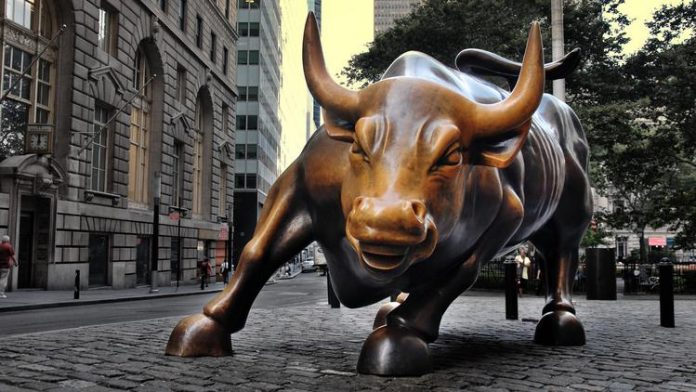Stocks traded flat this morning after Fed Chairman Jerome Powell delivered a not-too-hawkish, not-too-dovish speech before the market opened.
“Price stability is the bedrock of a healthy economy and provides the public with immeasurable benefits over time. But restoring price stability when inflation is high can require measures that are not popular in the short term as we raise interest rates to slow the economy,” Powell said in a prepared statement delivered to Sweden’s Riksbank.
“The absence of direct political control over our decisions allows us to take these necessary measures without considering short-term political factors.”
Despite Powell sticking to his guns on rates, billionaire investor Paul Tudor Jones expects a positive year for stocks nonetheless
“You’ve probably got something just under a trillion dollars of excess demand in U.S. stocks,” Jones said this morning.
“Where is the selling going to come to offset that that demands coming from buybacks, from the corporate line items, from some combination of buybacks and M&A? That’s a significant amount. Ceteris paribus, everything being the same, the stock market would be up 7% or 8% this year.”
Jones also doesn’t expect an earnings recession this year, which would crunch stocks lower as price-earnings multiples fall. Morgan Stanley’s Mike Wilson, who was one of Wall Street’s most accurate analysts in 2022, updated his forecast for 2023 last evening.
“If the [equity risk premium] rises by 250bps in a recession, and the 10-yield [US Treasury] yield subsequently declines to 2.75%, the [price-earnings ratio] would fall to 13.2x, 22% below current levels. [Earnings per share] forecasts will likely be lower too if / when this happens, which means stock prices could be down even more than 22% at the lows.”
The equity risk premium is the difference between the stock market’s expected return and the expected return from US Treasury T-bills, which mature in one year or less. A recession would cause the equity risk premium to rise, driving the current price-earnings ratio lower. Wilson says the PE ratio should drop 22%, bringing market valuations down the same amount.
We’ll find out this earnings season whether an earnings slowdown is already taking place. More important will be the forward guidance, which many corporations are expected to lowball so as not to disappoint shareholders down the road.
Before earnings are released, however, investors have the December Consumer Price Index (CPI) – due out Thursday morning – to contend with.
JPMorgan analysts believe there’s an 85% chance that the S&P will rally in response to the CPI release. A year-over-year (YoY) inflation print of 6.4%-6.6% would launch the S&P 1.5%-2.0% higher according to a note released by the bank’s trading desk today. A YoY print below 6.4% would cause a 3.0%-3.5% S&P rally.
A print greater than 6.6%, on the other hand, would cause an S&P selloff to the tune of 1.5%-2.5%. JPMorgan’s trading desk says there’s just a 15% probability of this outcome.
Will the post-CPI gains last, though, in the event that the market sees a cooler-than-expected print? JPMorgan’s top strategists all hold the same view:
Fade every rally because the S&P will inevitably touch the 2022 lows again this year.
That’s something I agree with, too. But, as we saw last year, bear market rallies can truly be vicious amid heightened market volatility. That means short-term traders may want to view this Thursday’s CPI as an opportunity to buy.
Even if the market ultimately retraces when bulls run out of steam.









